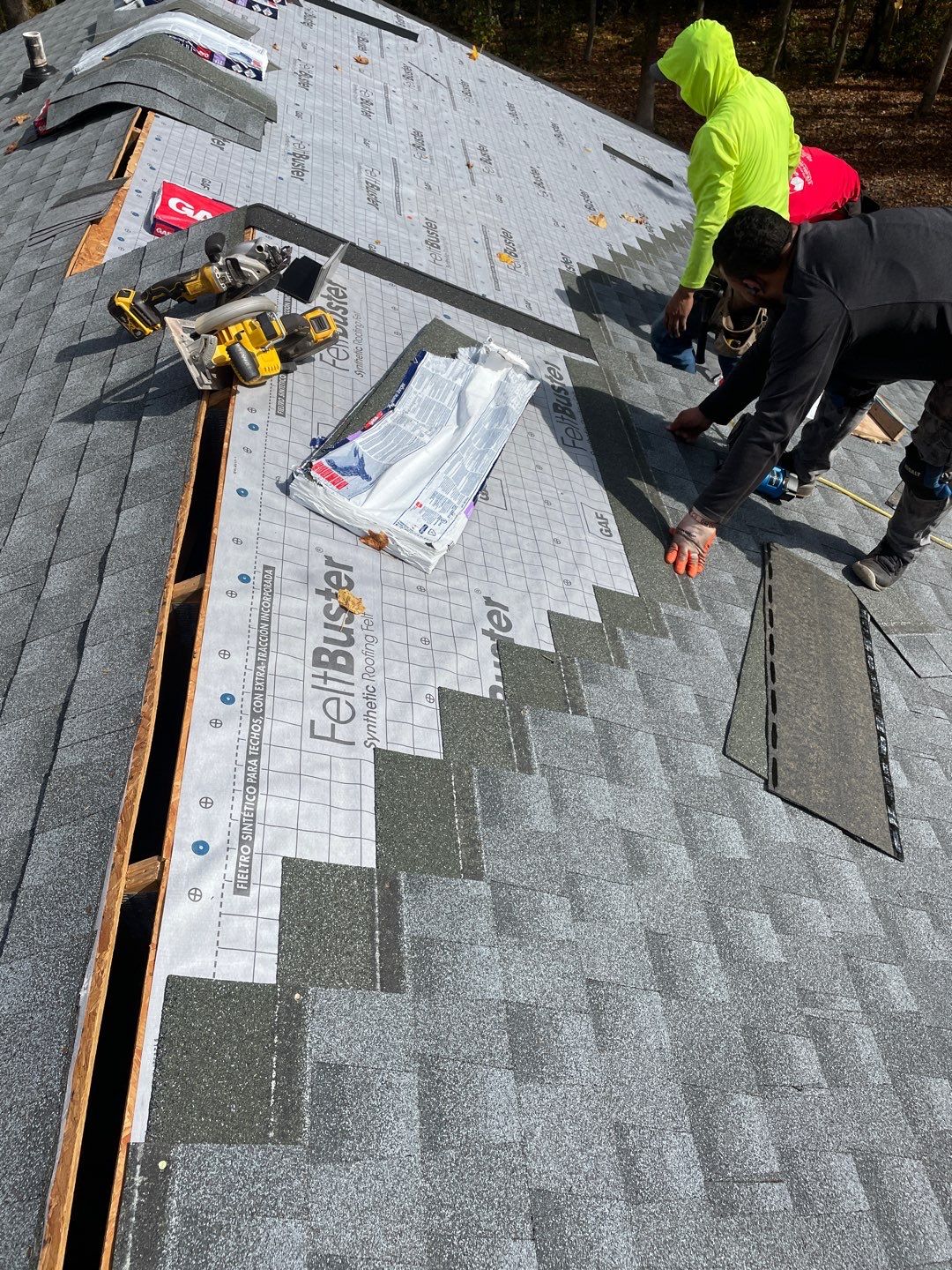Finest Practices for Ensuring Correct Roof Air Flow
A well balanced consumption and exhaust vent proportion, frequently 1:300, plays a critical duty, with consumption vents ideally put at the reduced side of the roofing for trendy air entry and exhaust vents at the peak for warm air leave. Maintaining insulation away from vents is crucial to stop airflow restriction.
Understand Air Flow Basics
Appropriately understanding ventilation essentials is vital for ensuring the longevity and efficiency of roof systems. Effective air flow reduces dampness build-up and temperature extremes in the attic, both of which can lead to considerable architectural damage over time. A well-ventilated roof aids in stopping typical concerns such as mold and mildew growth, wood rot, and ice dams, which can compromise the integrity of the roofing products and the underlying structures.
The primary objective of ventilation is to promote the activity of air, permitting for a regular exchange in between the outside and interior environments. This equilibrium is attained through a combination of intake and exhaust vents that interact to keep optimum air flow. Intake vents, normally located along the eaves or soffits, allow fresh air to get in the attic room, while exhaust vents, usually positioned at or near the roof covering ridge, enable hot, damp air to escape.
Key elements influencing the efficiency of roof air flow consist of proper placement, ample sizing, and guaranteeing that both consumption and exhaust vents are unblocked. Routine examination and upkeep are important to determine prospective blockages, damage, or ineffectiveness in the air flow system, consequently protecting the roof covering's performance and sturdiness.
Sorts Of Roof Covering Vents
Roofing vents play a vital function in preserving reliable attic room air flow and, by extension, the general health and wellness of the roof. Numerous kinds of roof covering vents are available, each with one-of-a-kind benefits customized to particular roofing demands. Ridge vents, for instance, are mounted along the roof's top, permitting cozy, humid air to run away from the attic. They provide constant ventilation and blend perfectly with the roofline, making them both effective and aesthetically pleasing.

Soffit vents are set up under the eaves and operate in tandem with roofing vents to make sure a well balanced consumption and exhaust system. By allowing cooler air to get in from below, soffit vents assist in the expulsion of hot air through upper vents. Gable vents, situated on the outside wall surfaces of the attic room, deal one more reliable service, specifically in homes with gable roofings.
Examine Your Current Ventilation

Next, consider the age and problem of your roof materials and air flow elements. Older systems might not abide by present building regulations or may have worn away in time, lowering their efficiency. Conduct a thorough exam to recognize any kind of indications of damage, such as rust, damage, or voids that could compromise the system's performance.
In addition, gauge the attic temperature and moisture degrees. High temperature levels and moisture can indicate poor air flow.
Setup Best Practices
Reliable setup of roof air flow systems is critical for making certain optimal performance and durability. Correct installment starts with comprehending the particular air flow requirements of the roof covering and the building it covers. This entails determining the right proportion of intake to exhaust vents, normally adhering to the 1:300 policy, which stipulates one square foot of air flow for every single 300 square feet of attic flooring room.

Intake vents should be mounted at the roof covering's lower edge, often in the soffits, to allow cool air to go into. Exhaust vents, on the other hand, should be mounted near or at the roofing's top to facilitate the departure of cozy, damp air.
Seal all air vent links diligently to prevent air leakages and prospective water seepage. Use high-grade materials and comply with manufacturer guidelines to make certain sturdiness and performance. Furthermore, incorporating ridge vents with baffles can dramatically improve air movement effectiveness by protecting against wind-driven rainfall and snow from going into the attic.
Inevitably, specific installation of roofing ventilation systems mitigates prospective concerns such as mold growth, ice dams, and structural damage, ensuring the roof's integrity and the structure's general health and wellness.
Routine Maintenance Tips
Uniformity in maintenance techniques is fundamental to making certain the long-lasting effectiveness of directory roofing ventilation systems. Throughout these evaluations, make certain that vents are complimentary of particles, nests, and other blockages that might restrain airflow.
Make use of a soft brush or a vacuum cleaner to get rid of dust and debris from consumption and exhaust vents. Be careful not to harm the vent displays or louvers during the process.
Proper insulation is similarly vital. Make sure that attic insulation does not obstruct the vents, as this can drastically limit air flow. If any type of insulation has moved or worked out, rearrange or change it to keep a reliable barrier.
Finally, replace any kind of damaged Recommended Site or missing out on parts promptly. Busted vents, cracked shingles, or scrubby blinking can all add to inadequate ventilation and needs to be attended to without hold-up. Normal upkeep makes certain that the roof ventilation system works efficiently, consequently expanding the lifespan of the roof itself.
Conclusion
Guaranteeing appropriate roof ventilation is critical for maintaining the performance and resilience of a roof. Adherence to the 1:300 consumption and exhaust air vent proportion, coupled with the critical positioning of vents, is vital. Regular semiannual evaluations, debris cleaning, and ensuring insulation does not obstruct air movement are important methods. Applying these best techniques will cultivate a well-ventilated roof system, thereby mitigating possible issues connected to moisture buildup and excessive warmth, eventually lengthening the roof covering's lifespan.
A well balanced intake and exhaust air vent ratio, address frequently 1:300, plays a pivotal function, with consumption vents ideally positioned at the reduced side of the roofing system for cool air entrance and exhaust vents at the height for warm air leave. Consumption vents, usually located along the eaves or soffits, allow fresh air to enter the attic room room, while exhaust vents, frequently situated at or near the roofing system ridge, enable warm, moist air to leave.
Soffit vents are mounted under the eaves and work in tandem with roofing vents to guarantee a well balanced consumption and exhaust system. By permitting cooler air to go into from below, soffit vents facilitate the expulsion of hot air with top vents. Adherence to the 1:300 intake and exhaust vent ratio, coupled with the tactical placement of vents, is vital.